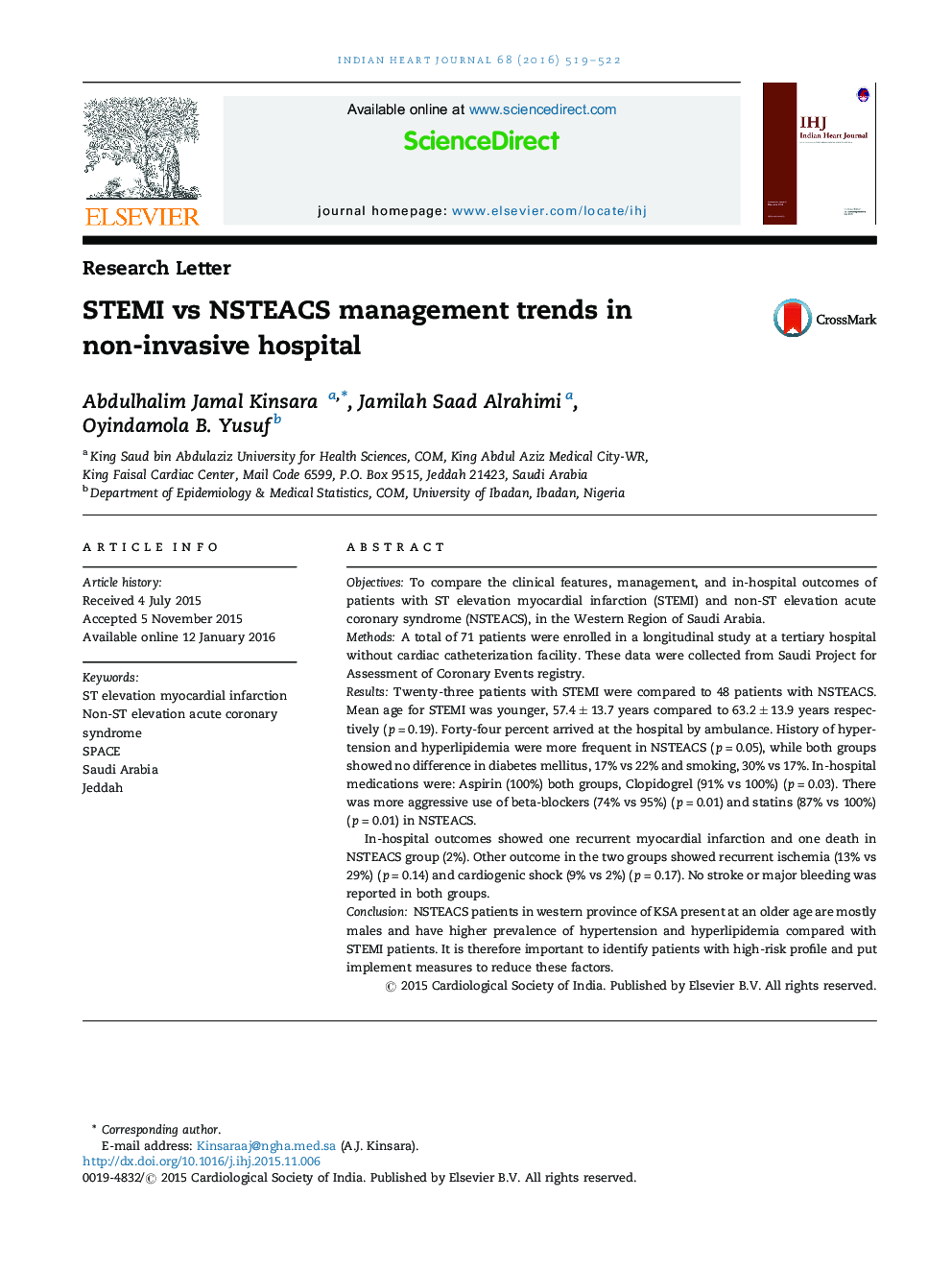| کد مقاله | کد نشریه | سال انتشار | مقاله انگلیسی | نسخه تمام متن |
|---|---|---|---|---|
| 2927322 | 1405438 | 2016 | 4 صفحه PDF | دانلود رایگان |
ObjectivesTo compare the clinical features, management, and in-hospital outcomes of patients with ST elevation myocardial infarction (STEMI) and non-ST elevation acute coronary syndrome (NSTEACS), in the Western Region of Saudi Arabia.MethodsA total of 71 patients were enrolled in a longitudinal study at a tertiary hospital without cardiac catheterization facility. These data were collected from Saudi Project for Assessment of Coronary Events registry.ResultsTwenty-three patients with STEMI were compared to 48 patients with NSTEACS. Mean age for STEMI was younger, 57.4 ± 13.7 years compared to 63.2 ± 13.9 years respectively (p = 0.19). Forty-four percent arrived at the hospital by ambulance. History of hypertension and hyperlipidemia were more frequent in NSTEACS (p = 0.05), while both groups showed no difference in diabetes mellitus, 17% vs 22% and smoking, 30% vs 17%. In-hospital medications were: Aspirin (100%) both groups, Clopidogrel (91% vs 100%) (p = 0.03). There was more aggressive use of beta-blockers (74% vs 95%) (p = 0.01) and statins (87% vs 100%) (p = 0.01) in NSTEACS.In-hospital outcomes showed one recurrent myocardial infarction and one death in NSTEACS group (2%). Other outcome in the two groups showed recurrent ischemia (13% vs 29%) (p = 0.14) and cardiogenic shock (9% vs 2%) (p = 0.17). No stroke or major bleeding was reported in both groups.ConclusionNSTEACS patients in western province of KSA present at an older age are mostly males and have higher prevalence of hypertension and hyperlipidemia compared with STEMI patients. It is therefore important to identify patients with high-risk profile and put implement measures to reduce these factors.
Journal: Indian Heart Journal - Volume 68, Issue 4, July–August 2016, Pages 519–522
